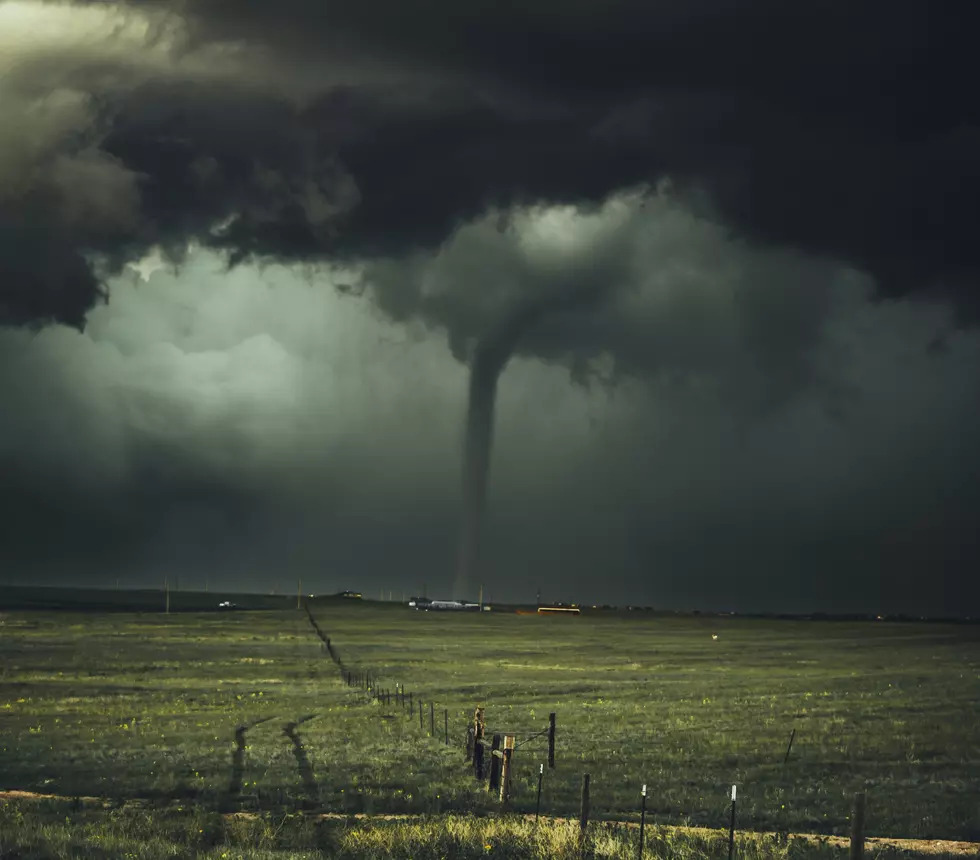
National Weather Service Issue Led to Delays in Iowa Tornado Warnings on Saturday
Saturday's Iowa tornado outbreak on Saturday, March 5 claimed the lives of seven people. However, tornado warnings issued by the National Weather Service on Saturday didn't get to residents nearly as quickly as they normally do.
According to the Washington Post, even though the National Weather Service was issuing warnings, there was a delay in the warnings getting to people in the state.
Daryl Herzmann, a systems analyst at Iowa State University, told the Washington Post, "The local offices were issuing the products in a timely fashion, but a dissemination delay affecting all [Weather Services] offices nationwide caused the products to be transmitted a number of minutes later."
Monday morning, Herzmann tweeted about the delay in warnings being issued on Saturday. As you can see, the largest delays occurred in the 4 p.m. hour. The town of Winterset, Iowa in Madison County was struck by a tornado at approximately 4:30 p.m.
37-year-old Mike Bolger and two of his children, 5-year-old Kinlee Bolger, and 2-year-old Owen Bolger, all of Blue Springs, Missouri were killed when the Winterset tornado hit the home of Bolger's in-laws. Bolger's mother-in-law, 63-year-old Melissa Bazley, was also killed. Bazley's daughter Kuri, Mike Bolger's husband, suffered serious injuries and his hospitalized. Mike and Kuri's other son, Brysen, has been released from the hospital. Bazley's husband and son survived the storm.
Two other people in Winterset were also killed. Both Rodney Clark, 64, and Cecilia Lloyd, 72, lost their lives when the tornado hit their homes.
The National Weather Service in Des Moines announced at around noon on Monday that the tornado that hit Winterset on Saturday was an EF-4, with estimated peak winds of 170 mph. The first EF-4 tornado in Iowa since October 4, 2013, it was on the ground for 69.5 miles and reached a maximum width of eight football fields (800 yards). Since 1980, only one tornado has been on the ground longer... a tornado in southern Iowa on June 7, 1984, was on the ground for 117 miles.
The National Weather Service's Director of Public Affairs, Susan Buchanan, told the Washington Post that system engineers began work on the problem just as soon as they were aware of it. She also said that, despite the delays, average lead times were still about 20 minutes during the storm outbreak.
According to the Washington Post, "Significant technical issues within the Weather Service information dissemination date back to at least 2013." They have to put these problems behind them. Lives are at stake, and not just in Iowa.
KEEP READING: Get answers to 51 of the most frequently asked weather questions...
LOOK: The most expensive weather and climate disasters in recent decades
More From 98.1 KHAK




![Luxury Wisconsin Cabin Sits on the World’s Largest Chain of Lakes [PHOTOS]](http://townsquare.media/site/675/files/2021/12/attachment-1193058.jpg?w=980&q=75)

![The Best Places to Get Ice Cream in the Corridor [GALLERY]](http://townsquare.media/site/675/files/2024/04/attachment-Add-a-little-bit-of-body-text-28.jpg?w=980&q=75)
![2024 Eastern Iowa Farmers Markets [LIST]](http://townsquare.media/site/675/files/2023/05/attachment-dfm.jpg?w=980&q=75)

